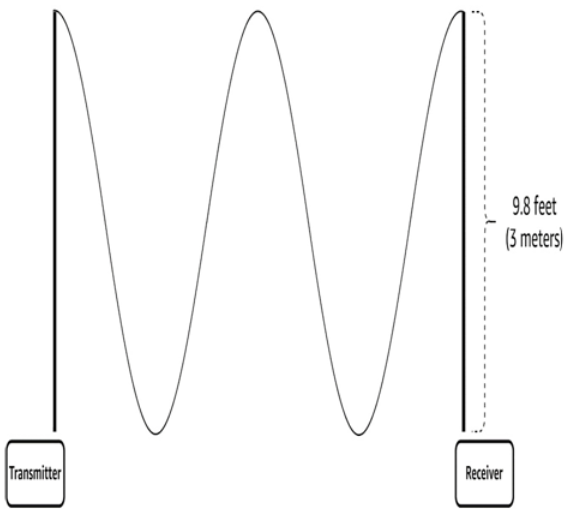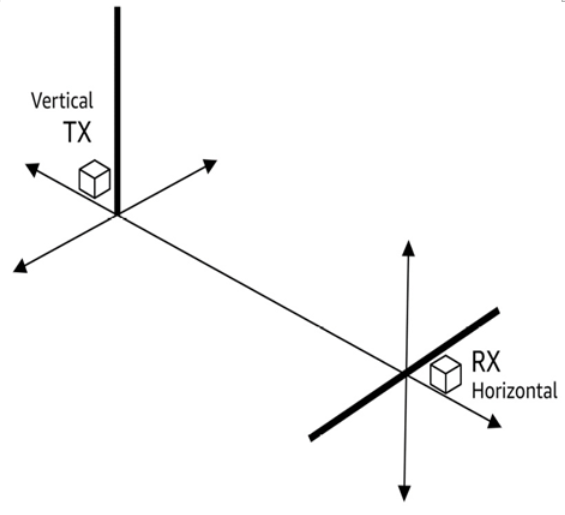Antennas– Understanding Network and Security for Far-Edge Computing
To know more about antennas we will cover the size, polarization, and types of antennas. We’ll look at these three in detail in the following sub sections.
Size
An antenna’s size is directly related to the wavelength of the signal involved – which, as you’ll recall, is inversely proportional to the frequency. Higher frequency signals generate physically shorter waves. For optimal reception, the length of the antenna for both the transmitter and the receiver should match the physical size of the wave exactly.
For instance, FM radio broadcasts have a wavelength of around 9.8 feet (3 meters):

Figure 3.3 – Optimal antenna size for a 100MHz FM broadcast
This isn’t an issue for the transmitter, but few people are willing to drive around with such an antenna on their car. With AM radio wavelengths being measured in hundreds of feet, the problem is even worse.
Fortunately, one or both sides can achieve near-optimal reception with an antenna size that is ¼ the size (or another multiple) of the wavelength. Unidirectional broadcasts tend to have a full-sized antenna to optimize the transmission (wattage is money after all), but much smaller antennas on the receive end.
Keep in mind that we’re talking about optimal reception. If the receive antenna on your car is off by a few inches, the relatively small amount of signal loss is made up for with signal processing techniques inside the receiver.
Polarization
Polarization can be divided into two main categories. Let’s look at them in detail.
Linear
So far, we’ve been talking about a simple case where the antenna matches on both sides in terms of size. Now, let’s look at what happens when they are not the same in terms of orientation:

Figure 3.4 – Misaligned monopole antennas
In this case, the receiving station will not be able to “catch” the radio waves out of the air because it is completely perpendicular to the transmitting station. While it’s okay to be a little bit misaligned, the farther out of alignment one side gets, the worse the reception.
If you are old enough to remember moving the rabbit ears around on a TV set until a particular channel came in more clearly, this helped because you were re-orienting the antenna on your receiver to more closely match that of the antenna on the roof of the relevant TV station.
This orientation of the signal is known as its polarization. So far, we’ve only been talking about what is known as linear polarization – the signal is straight up and down (vertical) or left to right (horizontal).
You may also like
Archives
- August 2024
- July 2024
- June 2024
- May 2024
- April 2024
- March 2024
- February 2024
- January 2024
- December 2023
- November 2023
- October 2023
- September 2023
- August 2023
- July 2023
- May 2023
- April 2023
- February 2023
- January 2023
- November 2022
- October 2022
- September 2022
- August 2022
- July 2022
- June 2022
- May 2022
- April 2022
- December 2021
- November 2021
- October 2021
- September 2021
- June 2021
Calendar
| M | T | W | T | F | S | S |
|---|---|---|---|---|---|---|
| 1 | 2 | |||||
| 3 | 4 | 5 | 6 | 7 | 8 | 9 |
| 10 | 11 | 12 | 13 | 14 | 15 | 16 |
| 17 | 18 | 19 | 20 | 21 | 22 | 23 |
| 24 | 25 | 26 | 27 | 28 | 29 | 30 |
| 31 | ||||||
Leave a Reply